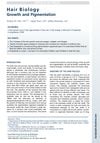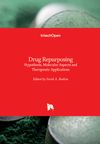Pharmacological Evidence for the Involvement of Adenosine Triphosphate Sensitive Potassium Channels in Chloroquine-Induced Itch in Mice
June 2017
in “
Pharmacological Reports
”
TLDR ATP-sensitive potassium channels play a role in chloroquine-induced itch in mice.
The study investigated the role of ATP-sensitive potassium (KATP) channels in chloroquine (CQ)-induced itch in mice. Intradermal injection of CQ caused scratching behavior, which was significantly reduced by pretreatment with KATP channel openers diazoxide (DZX) and minoxidil (MIN). Conversely, the KATP channel blocker glibenclamide (GLI) reversed the anti-pruritic effects of DZX and MIN. Additionally, qRT-PCR analysis showed decreased expression of the Kcnj8 gene after CQ injection. These findings suggested that KATP channels were involved in CQ-induced itch, indicating a potential link between cellular metabolic state and itch.


